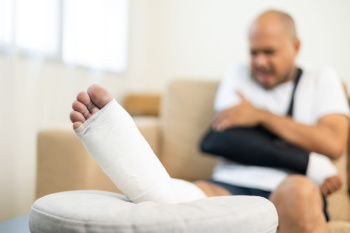
Fall prevention is essential for seniors, as falling can lead to serious injuries that impact their health and independence. Regular fitness activities that improve balance, strength, and flexibility can help seniors maintain stability and reduce the risk of falls. An eye exam is essential to ensure that vision problems, which can contribute to falls, are addressed. Seniors should also remove floor clutter and ensure their living space is free from obstacles like rugs or furniture that could cause tripping. Wearing supportive footwear, such as Velcro sneakers, provides better grip and stability compared to loose or high-heeled shoes. These simple yet effective steps can significantly lower the risk of falls, promote safety, and enhance the overall quality of life for seniors. If you are elderly or are caring for a senior citizen, it is suggested that you include a podiatrist as part of a healthcare team who can effectively monitor foot health.
Preventing falls among the elderly is very important. If you are older and have fallen or fear that you are prone to falling, consult with one of our doctors from New England Foot & Ankle . Our doctors will assess your condition and provide you with quality advice and care.
Every 11 seconds, an elderly American is being treated in an emergency room for a fall related injury. Falls are the leading cause of head and hip injuries for those 65 and older. Due to decreases in strength, balance, senses, and lack of awareness, elderly persons are very susceptible to falling. Thankfully, there are a number of things older persons can do to prevent falls.
How to Prevent Falls
Some effective methods that older persons can do to prevent falls include:
- Enrolling in strength and balance exercise program to increase balance and strength
- Periodically having your sight and hearing checked
- Discuss any medications you have with a doctor to see if it increases the risk of falling
- Clearing the house of falling hazards and installing devices like grab bars and railings
- Utilizing a walker or cane
- Wearing shoes that provide good support and cushioning
- Talking to family members about falling and increasing awareness
Falling can be a traumatic and embarrassing experience for elderly persons; this can make them less willing to leave the house, and less willing to talk to someone about their fears of falling. Doing such things, however, will increase the likelihood of tripping or losing one’s balance. Knowing the causes of falling and how to prevent them is the best way to mitigate the risk of serious injury.
If you have any questions, please feel free to contact our offices located in Wakefield, MA, Nashua and Derry, NH . We offer the newest diagnostic and treatment technologies for all your foot care needs.









